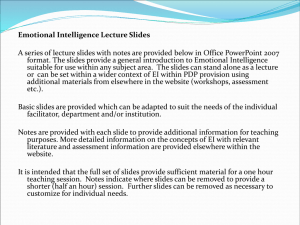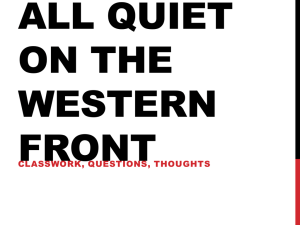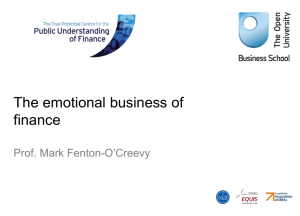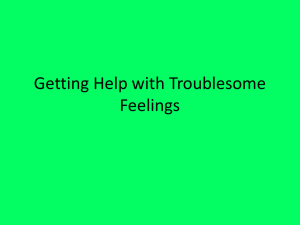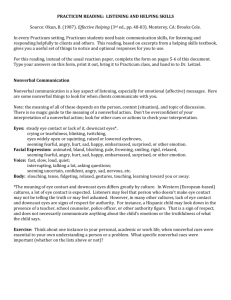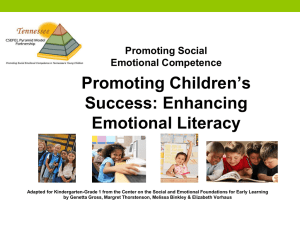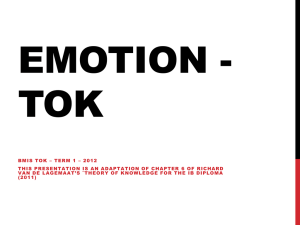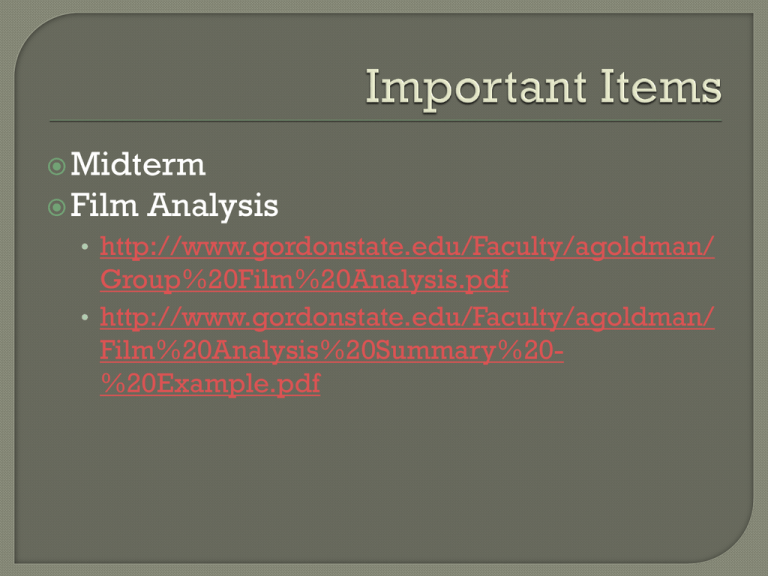
Midterm
Film
Analysis
• http://www.gordonstate.edu/Faculty/agoldman/
Group%20Film%20Analysis.pdf
• http://www.gordonstate.edu/Faculty/agoldman/
Film%20Analysis%20Summary%20%20Example.pdf
What
is pseudolistening?
What is defensive listening?
What is message overload?
What is selective listening?
Chapter 7 Lecture/Recap
More
than just feelings
Internal feelings and feelings associated
with a relationship
“orients us to, and engages us with, what
matters in our lives…”
Can be experienced as a blend of
emotions
Part
of some scholars’ definition (e.g.
Buzzanell & Turner, 2003; Tracy, 2005)
Examples of Manufactured Feelings?
System #1
• Valence
Positive or negative feeling?
• Activity
Action or Passivity?
• Examples
Active-Negative: Fear
Active-Positive: Excitement
Passive-Negative: Depression
Passive-Positive: Calmness
System #2
• Intensity
Labeling emotions
• Examples
Annoyance --- Anger ----
Rage
Dualism:
polar opposites = totality of
something; either-or
Mind ----- Body
• Mind: Reason ----- Emotion
Links
between emotion, body, and
reason?
Emotions impact physical functions?
Emotions help with reasoning
THE BIOLOGICAL THEORY
OF EMOTION
• Emotion = biological
THE SOCIAL INTERACTION
THEORY OF EMOTION
• Affect of biology AND
• All people = same
experiences w/ emotions
• Emotion and thought =
separate
• Observable emotional
expressions > meaning
•
•
•
•
•
social factors
What does a person do
before, during, and after
the emotion is
felt/displayed?
Others’ reactions impact
feelings
Emotions interrelated with
cognitions
Not universal
Subjective meaning
Emotional
Contagion
Emotional Experience
Emotional Communication
Communicating Emotionally
Emotional Effects
http://www.youtube.com/watch?v=CfXTcycZ
u1k
Verbal Cues
• Often indirect cues
• Examples: sarcasm, rhetorical questions
Nonverbal Cues
• Facial expressions among most common
• Also consider paralanguage
Combinations of Cues
Movie Clip (Wedding Scene, Sex and
City 1)
the
Observe two different encounters between 2 individuals (in person or in
media):
- An encounter between 2 different sexes (male/female)
- An encounter between the same sex (male/male or female/female)
To help distinguish between their verbal cues and their nonverbal cues, try
watching certain parts without volume. Also, remember to focus on how they
communicate emotions (and responses to others’ emotions)
(1) Discuss how the individuals used nonverbal and verbal communication to
communicate their emotions.
(2) Also consider (and discuss) their (male vs. female; encounter 1 vs.
encounter 2) responses to each other’s emotions.
(3) What differences (if any) did you notice about their (male vs. female;
encounter 1 vs. encounter 2) emotional display?
(4) What similarities (if any) did you notice about their emotional
(5) Discuss the context of the situation; do you think that impacted your
findings? How?
You MUST use terminology from the text/chapter.
Format: minimum of 2 paragraphs; typed
Bright
side vs. Dark side
Developing individual emotional skills
• Know your feelings
• Analyze the situation
• Own your feelings (I-messages)
• Reframing
• Empathize
Context
• Feeling rules
• Emoticons (for online environments)
Meta-Emotion
Culture
• The way cultures think about emotion
• The way cultures communicate emotion
Gender and Sex
• Stereotypes attached to gender and sex
• Women/femininity = more expressive; agree?
• Influence of age
Watch the following clips for examples of how individuals
intentionally (or unintentionally) explain emotions.
How do these terms factor in?
• Emotional Contagion, Emotional Experience, Emotional
Communication, Communicating Emotionally, Emotional Effects
Would their emotional display impact your willingness to
communicate with them interpersonally?
• How would you respond to their emotional display?
http://www.youtube.com/watch?v=xBSYD0dQCAw&sns=em
http://youtu.be/uiws904iuEQ
http://www.youtube.com/watch?v=zuHZMrlie0&feature=related
http://www.youtube.com/watch?v=8sSfbQk7DxE&feature=r
elated

